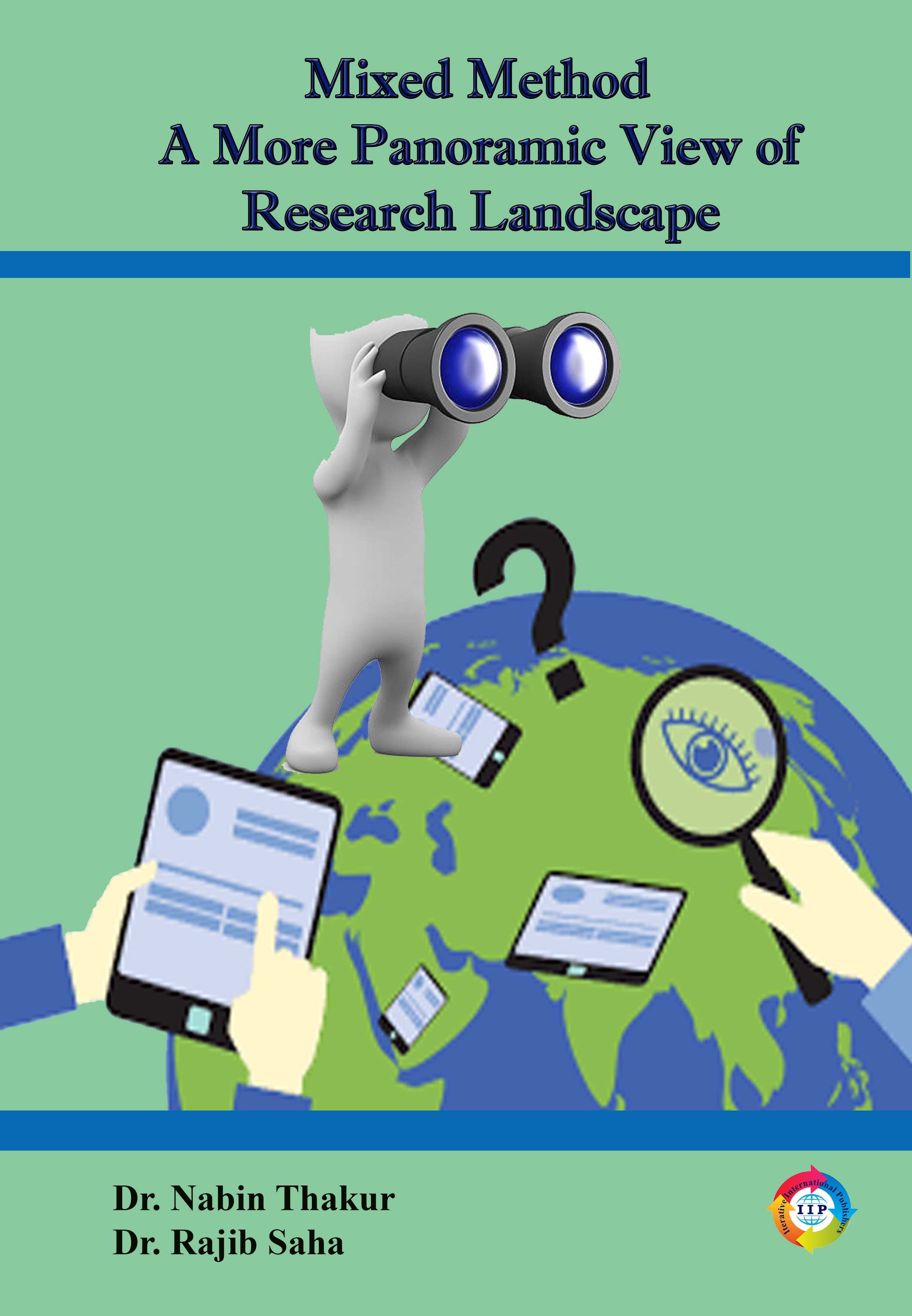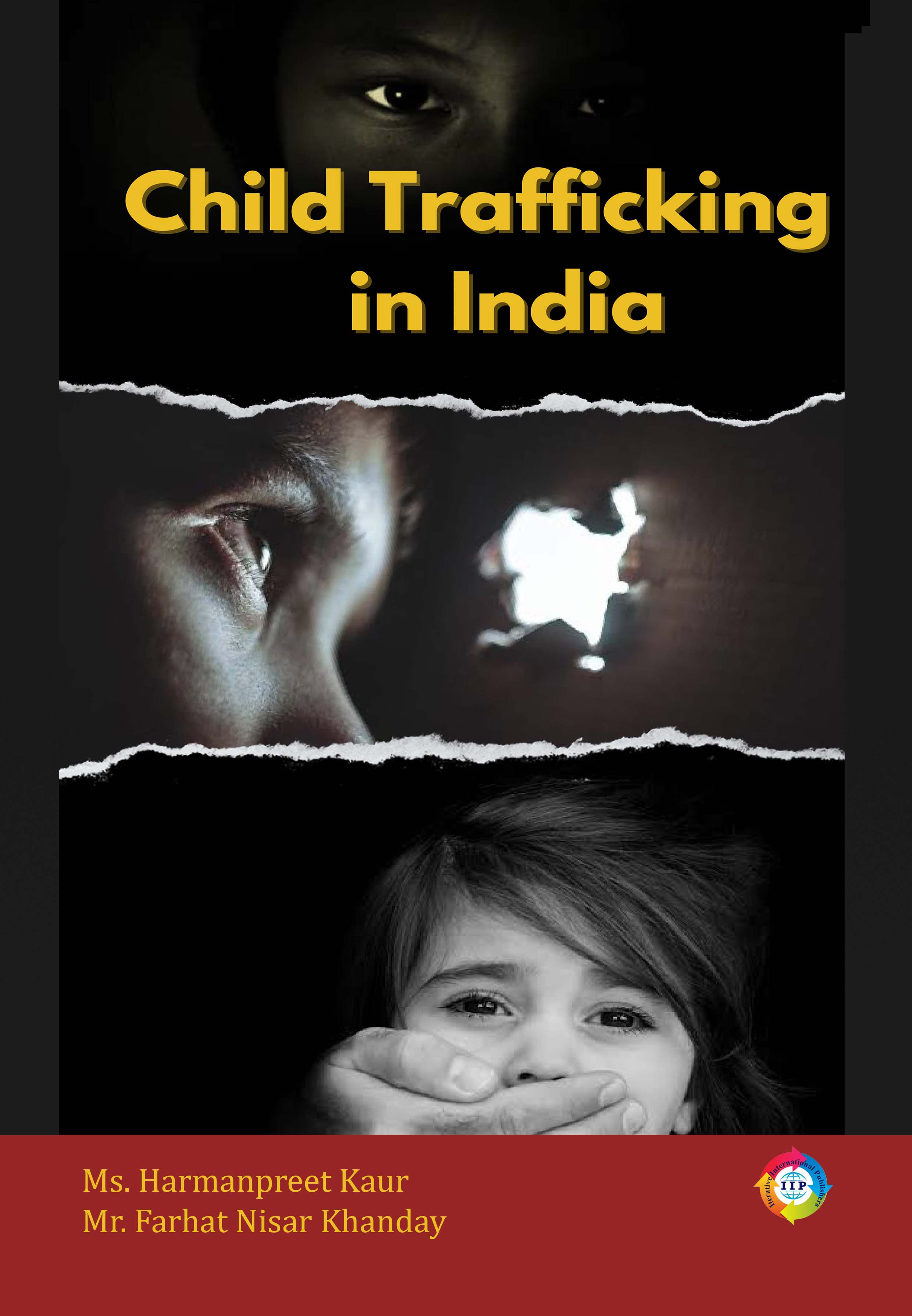
MIXED METHOD:A MORE PANORAMIC VIEW OF RESEARCH LANDSCAPE
-
TypePrint
- CategoryAcademic
- Sub CategoryEdited Book
- StreamSocial Sciences
The aforementioned definition does not define what research is, but it defines what mixed method research is. As mentioned this definition has come in the first decade of the 21st century which has witnessed a change in the research design to have more credibility, more generalizability and more validity of the research findings. And what modification has come as new and novel in the arena of research during the first two decades of this century? Researchers have started to use a “more integrated approach to the investigation of social phenomena”. Earlier, or even today, most of the researchers used to use and still like to conduct research study by following either quantitative research method or qualitative research method. Most of the findings of this kind of studies are either based on the analysis of the quantitative data solely or by analysis the qualitative data solely. Research provides the option for further research on the one hand, and on the other, the findings of the research may be cross questioned which needs to be answered in a more satisfying way, in a more credible way, and with more valid information or data so that the findings gets more generalizability. And here mixed method research become mostly useful where the findings of the quantitative study may be made more valid with the support of the qualitative data, and vice versa. Even the findings of a quantitative study becomes more explanatory when it is followed by the collection and analysis of the qualitative data on the same variables. And on the other hand, the findings of a qualitative study becomes more exploratory when it is followed by collection and analysis of quantitative data. Johnson et al. (2007) mentions "Mixed method inquiry is an approach to investigating the social world that ideally involves more than one methodological tradition and thus more than one way of knowing, along with more than one kind of technique for gathering, analyzing, and representing human phenomena, all for the purpose of better understanding". The present book “Mixed Method: A More Panoramic view of Research Landscape” has been designed to deal solely with different aspects of mixed method research along with some papers which have conducted studies in mixed method research. This book has been designed keeping in view the demand of the student researchers as well as the beginners of the mixed method research to be used as handy book. Ten different papers have been included in vi the book by a galaxy of eminent authors who have contributed their worthy views and hard-work in the form of papers for this book. The very first paper has been contributed by Dr. Madhumita Baidya and Adrija Dutta who have entitled their paper as “Explanatory Mixed Method Research Design”. In this paper they have dealt in detail what explanatory mixed method research is and how it can be conducted. In a step by step method and with schematic diagram they have described the procedure of conducting explanatory mixed method research. While delineating the different variants of this design the paper has discussed about Follow-up explanation model and Participant selection model. The authors have worthily included the strength and weakness of this method too. The second paper entitled “Mixed Methods Research: An Overview of Designs and Applications” by Dr. Sabiruddin Molla deals with the basic ideas of mixed method research by starting the paper with the definition of mixed method research by different authors. The paper then moves on to deal with the history and development of mixed method research. The author has beautifully discussed where to use this method and why. The necessity of this designed has been beautifully presented with diagrams. Different dimensions of mixed method research then follows where the author has dealt with The Convergent Parallel Design, The Explanatory Sequential Design, The Exploratory Sequential Design, The Embedded Design, The Transformative Design and The Multiphase Design, and the steps of conducting all these designs have been included thereafter. The third paper is an applied form of mixed method research where the author Debolina Maity in her paper entitled “To Speak or not to Speak: An Explanative Mixed-Method Analysis of Women’s Freedom of Speech and Expression on Facebook” studied women’s freedom of speech and expression on Facebook using an explanative mixed-methods approach. Both quantitative and qualitative methods had been used to study the women’s right to freedom of speech and expression is rightfully maintained or not on Facebook. An in-depth analysis on the basis of an online survey of 100 women respondents as well as interviews of 20 women among the 100 respondents from Kolkata had been conducted which determined how women feel while expressing themselves on Facebook as a platform. The forth paper is an interesting study on “Food Security and Sustainable Development” by Dr. Renu Agarwal, Harini P and Sri Varshni J. this paper mentions that the majority of the global supply of food is provided by agriculture, which in turn maintains an indispensable number of ecosystem services. Food as several connections to sustainable development objectives vii since it is essential to achieving food security. If everyone, at all times, has physical and financial access to adequate, nutritious, and secure food that satisfies their dietary needs and food choices for an active and healthy life, then there is food security. It has a been recognised as one of the century's most important global challenges. It focuses primarily on making sure that there is enough production and eating enough to ensure survival. In the fifth paper entitled “Exploring Inclusive Education at Secondary and Higher Secondary School Settings in India and Japan: A Comparative Analysis”, the authors Susmita Paul, Shinjini Bhattacharya, Sarmistha Das and Chandan Sardar compared the current status of inclusive education in Japan and India, focusing on the practical implications of educational policies, infrastructure facilities in schools, and teachers' efficacy in teaching children with special needs. Data was collected through online surveys using self-made standardized tools. The findings revealed mixed results regarding the implementation of inclusive education in both countries. The study highlights the importance of a holistic approach, including skill-based teacher training and effective use of learning resources, to ensure inclusive education in all schools, enabling learners to achieve their educational goals regardless of any disabilities or challenges they may have. Rohini Sharma, in her paper which is the sixth paper of this book entitled “Victim Compensation Scheme through the Lens of Indian Judicial System: A Way Forward” deals with the fact that duty for providing justice does not come to halt after the judgment has been made by the courts. This study uses integrated mixed method design to explore possibilities in these compensation schemes and raises questions for researchers, academicians and scholars to critically examine the victim compensation schemes and what could be done for strengthening the victims. Although the victim compensation schemes are widely ranged from road accidents to other cases, the main concern of this paper will be to access the Indian Penal Code and Criminal Law dealing with women and child victim cases. The seventh paper entitled “A Study on Assessing Self-efficacy of the Teacher Trainees: A Mixed-method Study” by Adrija Chattopadhyay used mixed method research. Both quantitative and qualitative approach were followed. An interview was taken from twenty teacher trainees from four different colleges with an open-ended questionnaire. The result revealed that various learning strategies allow one to make his/her own choices, focused feedback, mastery experiences, verbal persuasion, vicarious feedback, comparing with pre-set performances, pedagogical content knowledge, betterment of teachers’ condition, capacity building etc. were the ways to develop self-efficacy and viii according to the respondents the teacher trainers play an important role to develop the self-efficacy among the trainee teachers as leaders, pathfinders. Dr. Somnath Majhi, in his paper entitled “Assessment of Welfare Schemes for the Educational Development of Scheduled Caste Population with Special Reference to Birbhum District in West Bengal” tries to critically analyse the various educational welfare schemes by central and state governments and assess their effectiveness in the study area. Primary data had been collected through interviews for qualitative analysis. Secondary data had also been collected from various governmental organizations. The ninth paper of this book has been contributed by Debanjana Chaudhury and Dr. Usashi Kundu (De). The paper entitled “A Study on the Level of Change Proneness among the Secondary School Teachers: A Multi-Faceted Analysis” has been conducted with the objective of finding out the nature of change proneness among the secondary school teachers. The explanatory sequential mixed design has been adapted for the present study where a sample of 208 secondary school teachers collected from the districts of West Bengal. The tenth paper which is also the last paper of this book is a study on “Influence of Music as a Learning Style on Mental Achievement of Learners at Higher Education Level: An Explanatory Research” is, as mentioned in the title of the paper by Surashree Guin, Moutusi Bose, Writopa Dam, and Soumi Chatterjee, an explanatory mixed method study aimed to examine the influence of music as a learning style on mental achievement among learners in higher education, while considering potential variations based on field of study. a survey with qualitative text analysis. A diverse group of 138 undergraduates, postgraduates, B.Ed., and M.Ed. students from both private and government colleges and universities across the country participated in the study. A questionnaire comprising both open-ended and closed-ended questions, was utilized as the data collection instrument. Mixed Method: A More Panoramic view of Research Landscape is a collection of ten papers on different aspects of mixed method research. The papers have been contributed by scholarly persons from different parts of the Indian academic arena. The editors of the book are highly indebted to all the authors for their valuable contributions in the form of papers to make this book a complete book on Mixed Method Research which is surely expected to open a more panoramic view of research landscape in the coming time. The sole liability of originality and genuineness of the papers in this book rest upon the contributing authors of the papers. the editors will feel rewarded if this book come into appear to be effective in the future to the researchers for developing a better understanding of the mixed method research and opening new methods of ix research validity, credibility and generalizability of the research findings. Lastly, we are grateful to the publishers without whose helping hand this volume would not have find a form of a book.
**Note: IIP Store is the best place to buy books published by Iterative International Publishers. Price at IIP Store is always less than Amazon, Amazon Kindle, and Flipkart.





COMMENTS
No Review found for book with Book title. MIXED METHOD:A MORE PANORAMIC VIEW OF RESEARCH LANDSCAPE